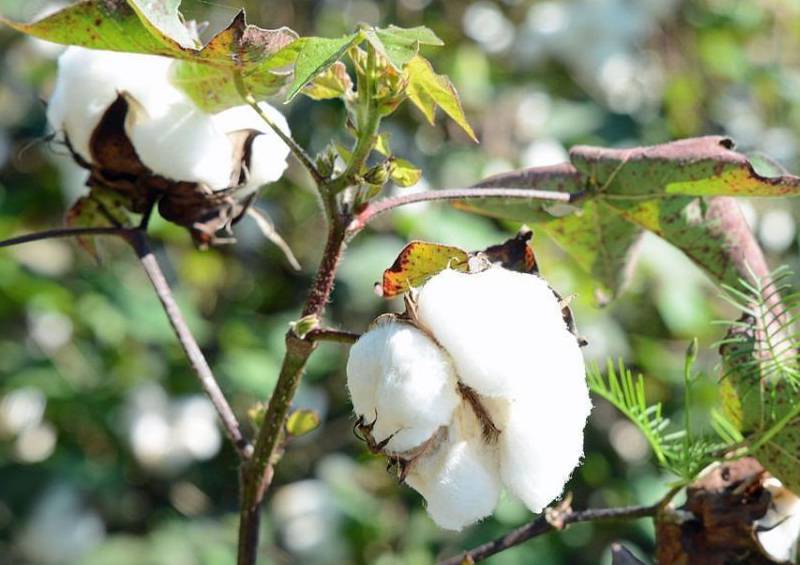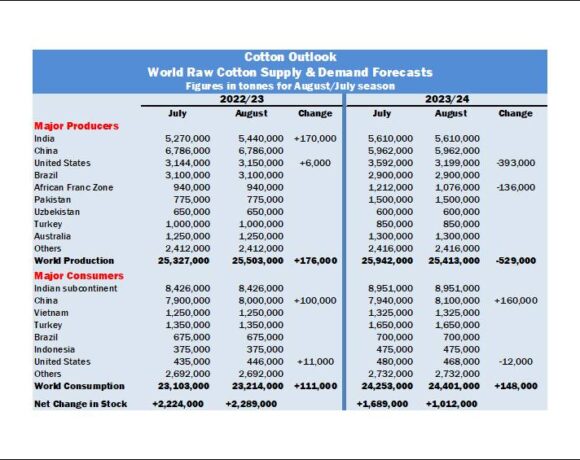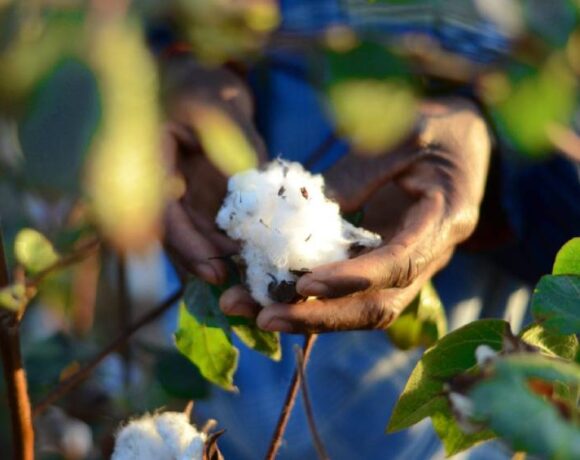Enhanced Focus On Sustainability Will Be Key To Robust Cotton Value Chain

Setting up a sustainable cotton textile production base will call for sourcing of sustainably-grown cotton fibre and deep engagement and a collaborative approach, along with exchange of ideas and leveraging of innovations will go a long way in making the cotton value chain robust and sustainable, say industry experts and observers.
While the domestic cotton textile industry is today trying hard to infuse circularity within its production and processes in order to supply textiles and apparel in a more sustainable manner, Indian cotton cultivation, faced with multiple challenges, is at the crossroads. Despite having the largest acreage, the average national yield at around 440 kg per hectare, is among the lowest in the world. In the last decade or so, the country’s cotton yield has gone down significantly, making the cultivation almost non-competitive. Currently, around six million farmers engaged in cotton cultivation are in a dilemma. Amidst all this, India, despite being the second largest producer of cotton after China, has become a net importer of cotton from being a net exporter.
“In recent years, the cotton-based textile industry has witnessed a dynamic landscape, marked by both opportunities and challenges. Despite the continuous growth in demand, the sector is confronted with distinct hurdles that demand strategic attention. Enhancing productivity in cotton cultivation, improving processing efficiency and streamlining logistics are the imperatives. Collaboration among the government bodies, industry stakeholders and farmers can facilitate the implementation of sustainable practices, ensuring the long-term availability of quality cotton,” says Rajinder Gupta, Chairman Emeritus, Trident Group.
Rakesh Mehra, Chairman, Confederation of Indian Textile Industry, believes that since the Indian T&A industry is predominantly cotton-based, there is a need to enhance the production system of sustainable cotton. Although India has initiated several commendable measures on the ground, there is need to put more concentrated efforts into developing sustainability metrics, measurement, quantification, traceability and labelling of sustainability to enhance trade competitiveness in the global market.
At present, data collection is one of the biggest challenges in sustainability assessment and also for traceability. Though many countries have developed certain sustainability measurement indicators, a robust system of measurement that enables labelling of either the production system or the product itself is yet to be devised.
Mehra emphasises the need for the Indian cotton value chain to embrace digital technologies like blockchain, IoT and data analytics, which will facilitate ESG-driven business models, aligning the industry with evolving environmental, social and governance standards and encourage farmer network expansion and also elevate transparency, accountability and sustainability in the value chain. This will ensure its relevance in the modern, responsible business landscape, leading to a more accountable and eco-conscious global market place. The launching of Kasturi Cotton initiative by the Ministry of Textiles is a commendable move in this regard.
“Awareness of sustainability and circularity issues, increase in yield and the need for change in the cotton industry, is currently the main focus of the government. A number of initiatives are being taken to address the most pressing social and environmental challenges of cotton farmers and demonstration of best practices among farmers for doubling their incomes along with developing transparency standards in procurement and sale of cotton,” states Lalit Kumar Gupta, CMD, Cotton Corporation of India.
Rajendra Barwale, Chairman, Mahyco Pvt Ltd, is of the view that the effects of escalating climate change on crop productivity is increasing the focus on the need for research related to sustainable cotton production for the future. It will be important to produce more with less resources to preserve soil health, conserve water and minimise usage of chemicals. India has the technologies in research pipeline for deploying such sustainable practices, which have proved their effectiveness at the lab level.
Ashok Gulati, Professor, Indian Council for Research on International Economic Relations, says that in addition to measures aimed at enhancing productivity of cotton, reforms in innovation and technology are essential. Numerical empirical studies conducted in India demonstrate that the adoption of Bt cotton had resulted in 24 per cent increase in cotton yield due to reduced pest damage. Small holders also experienced a much higher gain in profit. Therefore, the government should streamline its control and grant farmers access to new and improved seeds such as Bollgard-II RRF and Bollgard-III. Besides, farmers need to be given better extension services to enable them to exercise their judgement in adopting this technology.
Synthetic fibres gained preference over cotton primarily due to their durability, widespread availability, affordability and ease of maintenance. The unit cost of production for synthetic fibres was also lower than cotton. Some of the properties of synthetic fibres such as stain and wrinkle-resistance, non-shrinkage and better shape retention also contributed to their popularity.
For cotton to regain its past glory, there is a need to raise awareness about the environmental impact of cotton as compared to synthetic fibres globally. An intriguing feature of cotton is that it consists of around 42 per cent carbon, resulting in the storage of 1540 kg CO2-equivalent in 1000 kg of fibre. Additionally, cotton plants play a role in absorbing CO2 and sequestering carbon in their biomass. Significantly, during cotton production, 2.2 kg CO2 equivalent per kg of fibre is sequestered, while only 1.7 kg CO2 equivalent is emitted. In contrast, production of synthetic fibre, derived from non-renewable resources, demands more energy. Moreover, synthetic fibres generate considerably higher greenhouse gas emissions during manufacturing.
Concerns also arise from the challenges of waste management due to non-biodegradability of synthetic fibres as well as emission of toxic pollutants across the entire life cycle of these fibres. Hence, cotton has a window of opportunity and a challenge to reclaim its status as an environmentally friendly fibre. However, the foremost challenge for cotton lies in reducing its unit cost of production and thereby compete with synthetic fibres on pure economic terms. One of the ways to do this is through enhanced productivity gains.














